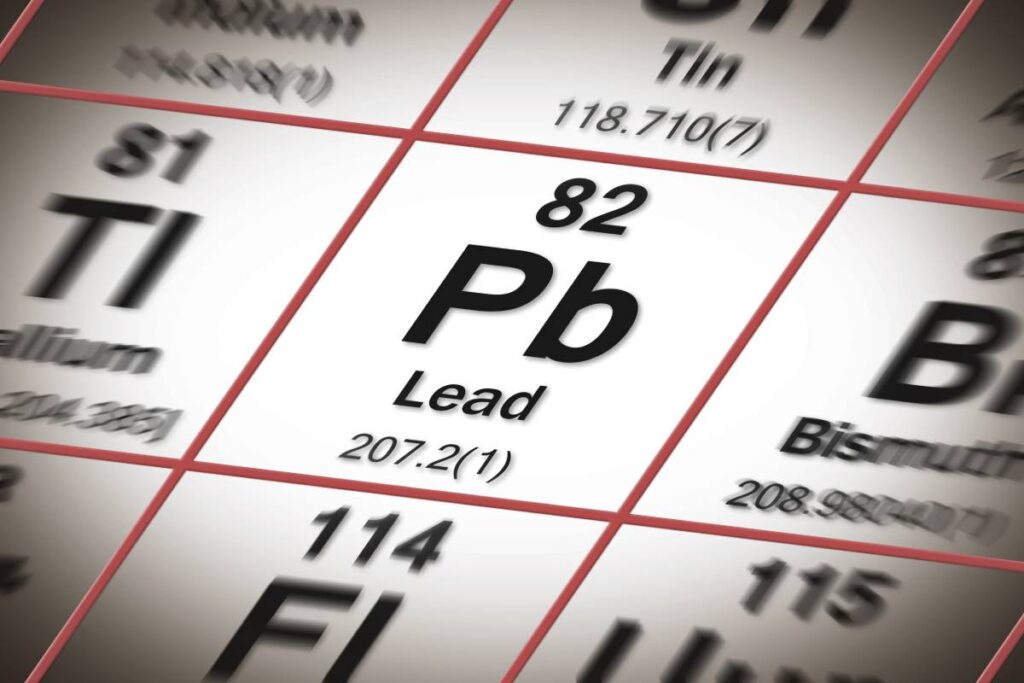Workplace and environmental lead exposure spearhead many modern incidents of lead poisoning. As described by Teerasarntipan et al. (2015), chronic exposure to lead presents with a blood lead level of 70 μg/dL accumulated over a period of 12 months in symptomatic patients.1 Symptoms of lead poisoning are ambiguous and dependent on the mode of exposure, resulting in a significant rate of misdiagnosis until the late stages.1 This article provides an overview of lead poisoning, including types of exposure, symptoms, physiological effects, and the history of lead poisoning in the US.
Industrial workplace exposure, such as in factories making batteries, ceramics and gasoline, often leads to constipation, anorexia and abdominal discomfort which do not, at least superficially, indicate lead exposure.1 Environmental exposure disproportionately affects young children and pregnant mothers in poor communities where regulations are not consistently enforced.2 This was demonstrated during the Flint, Michigan water crisis.2 Tests showed that these 4.9% children had elevated levels of lead in their blood, after prolonged exposure to contaminated water.2 Furthermore, Hanna-Attisha et al. (2016) suspects that permanent risks for intellectual impairment and developmental issues increase for children exposed to lead contaminated water as fetuses or in utero.2 What both incidents have in common is the awful reality that without a major irreparable health incident, it is difficult to diagnose lead poisoning.
A clue that the body has been chronically exposed to lead lies in the liver.1 Teerasarntipan et al. (2015) explains that the liver accumulates lead and patients with lead poisoning have noticeable liver injury in the form of fibrosis and steatosis.1 To distinguish this kind of fibrosis and steatosis from liver injury seen in fatty liver patients, Teerasarntipan et al. (2015) selected for a group of patients with chronic lead exposure who did not have any risk factors for developing other liver conditions.1 The range of liver stiffness due to fibrosis and steatosis has been challenging to delineate and requires further assessment, but it is promising and noticeably different from the data associated with other forms of liver injury, such as fatty liver.
Superior to treating a disease is preventing it from developing in the first place. A lack of thorough investigation into the plumbing and pipes used by the suppliers of Flint Water is the primary reason residents experienced lead poisoning.2 Water from the Detroit Water and Sewage Department had been rigorously tested and verified as low toxicity. On the other hand, Flint Water suppliers had a large infrastructure of lead piping which resulted in a 6.6% increase of dissolved lead; this was not discovered until the crisis had escalated.2 The Flint incident and its disproportionate impact on children proves that prevention is not only possible with consistently imposed environmental regulations but also should be the expected standard.
The US tackled its major lead poisoning crisis in the early 1970s when lead use in paint and gasoline was eliminated; this preventative approach saw a massive decline in blood lead levels in 17 μg/dL (all ages) in 1976 to 4 μg/dL in the early 1990s to less than 2 μg/dL today.3 Despite this progress, at least 500,000 children in America remain vulnerable to lead poisoning due to socioeconomic disparities, resulting in poorly enforced environmental regulations in the communities they call home.3 As such, enhancing treatment options is a necessary goal. New research is investigating the ability of N-acetylcysteine (NAC) and N-acetylcysteine amide (NACA) to competitively bind with lead to prevent its accumulation in the body.4 Lead toxicity occurs when it binds with glutathione in the body; preventing this could prevent or reverse lead accumulation in body tissues.
References
- Teerasarntipan et al. Changes in inflammatory cytokines, antioxidants and liver stiffness after chelation therapy in individuals with chronic lead poisoning. BMC Gastroenterology (2020) 20:263 https://doi.org/10.1186/s12876-020-01386-w
- Hanna-Attisha, et al. Elevated Blood Lead Levels in Children Associated With the Flint Drinking Water Crisis: A Spatial Analysis of Risk and Public Health Response. American Journal of Public Health (2016) 106: https://doi.org/10.2105/AJPH.2015.303003
- Landrigan & Bellinger. It’s Time to End Lead Poisoning in the United States. JAMA Pediatrics (2021) 175:12 https://doi.org/10.1001/jamapediatrics.2021.3525
- Chen et al. Characterizing N-acetylcysteine (NAC) and N-acetylcysteine amide (NACA) binding for lead poisoning treatment. Journal of Colloid and Interface Science (2012) 371 https://doi.org/10.1016/j.jcis.2011.12.052

